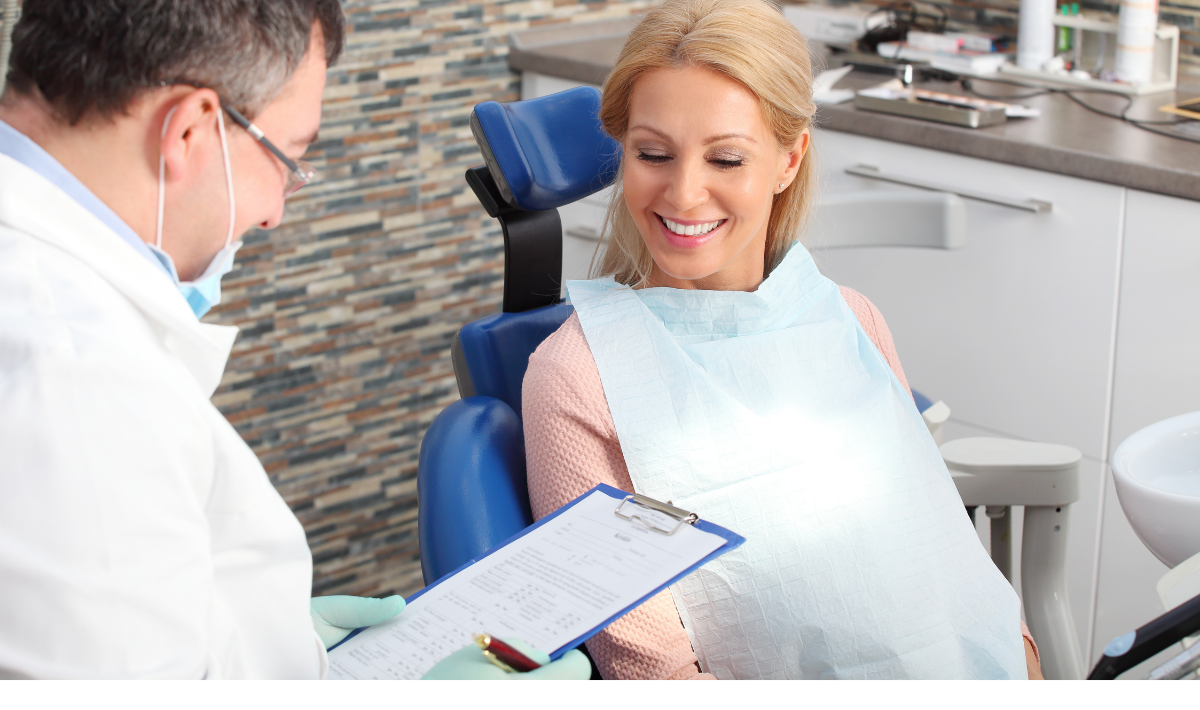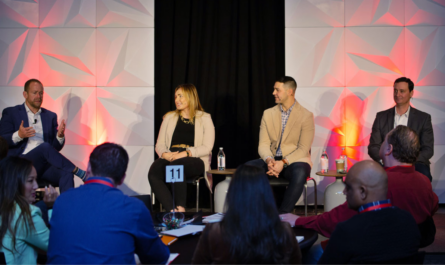By Dr. Todd Snyder
Today’s populations more than ever before are shoppers with the ability to have instant answers provided to them by the internet. Comparison shopping is higher than ever, occurring with virtually any product or service and is typically driven by cost alone. Patients do not possess the knowledge to properly diagnose or treat themselves and thus must still rely on the dental practitioner. Patients’ perception of dental work is that it can be shopped like a common commodity or brand product as opposed to a service based custom product which is not comparable.
Case acceptance is critical to the survival of a dental office and during a recession it is more important than ever to possess the technology and skills to motivate patients to proceed with treatment. Pointing at radiographs to justify the need for treatment has never worked well, nor has talking to the patient in dental terminology. Patients are going online and educating themselves more than ever, looking for second opinions to corroborate their own denial to a problem being present or avoiding treatment because they cannot justify the need or expense. It is important to have technology that is simple and visual for anyone to perceive that a problem potentially exists and can compel someone to act or better yet receive recommended dental treatment.
Has the explorer become ancient history? Almost. Other than the need to check a margin on an indirect restoration there is virtually no need for the use of an explorer any more. The invention of the intraoral camera has been around for many years and has allowed us to show our patients when a crack is present or a filling is failing as well as many other types of visually perceivable problems. The ability to visually see and comprehend what is being diagnosed is one of the most motivating tools that we can possess. To utilize our senses can be a very powerful and motivating tool to assist the dental team in the diagnostic process with our patients. For example, the Diagnodent by Kavo is a diagnostic tool that uses the sense of sound to get the patient involved due to the noise the device makes when there is a change in the density of the tooth structure. The patient is instructed that if the device makes a noise that typically would relate to the patient and practitioner that some level of damage has occurred to the tooth and could necessitate preventive or minimally invasive treatment or potentially a more invasive filling. If the audible noise or “buzzer” went off it was simple, the patient would typically start counting in their head how many times the device made a noise simply out of concern. After the exam the patient would then typically state out of concern how many cavities they thought they had heard and look to the dentist for guidance.
Even though patients are told they have a cavity or decay in a tooth it is amazing how patients still tend to block out the need. Furthermore an ordinary intraoral camera image with stain present in the occlusal grooves of a tooth may not be a cavity but can look like one to any untrained patient. Even with the ability to see small cavities with the assistance of an intraoral camera, patients still did not possess the training to perceive what was or was not a cavity. Thus pointing to an actual image of a tooth with a cavity still for many patients would not motivate them to move ahead with dental treatment because they don’t know what they are looking at, to them it looks like a tooth with some stain on it. Sometimes a cavity can look like a stain such that a simple image from an intraoral camera did not sell the patient on the need for treatment.
The newest type of technology may remove the patient’s concerns once and for all. For the first time ever the patient is capable of seeing their tooth with an identifiable reference for decay. They are now able to visually see decay in the form of an image of their tooth utilizing fluorescence to make decay visible and simple to distinguish to even an untrained eye. The patient that questions the diagnosis will only have the same results reproduced upon seeing any dentist with the same technology applied. Anyone not utilizing the technology may be missing out on potentially undiagnosed pathology for their patient’s benefit. With research having shown that the common dental explorer is no better than a coin toss at diagnosing a cavity; it should be eliminated from the diagnosis process and saved for evaluating marginal adaptation of indirectly fabricated restorations.
The justification for fillings or indirect restorations is finally at hand. The SOPROLIFE from ACTEON North America provides not only the dentist but his patient with the ability to see an image of the actual tooth in question with different areas highlighted by various colors signifying the density of the tooth and thus to infer tooth decay. Upon illuminating a tooth if there are red areas apparent, it is easy for both the dentist and to the layperson/patient whereby it allows them for the first time, to self-diagnose a tooth surface area that has decay present. This should alleviate any concern by the patient that the dentist has any agenda at hand other than the patient’s best interest, a healthy cavity free mouth. The patient is now more accountable for their dental treatment and overall oral health due to seeing the red areas on their teeth which creates the motivation and visible accountability.
The hygienist can also provide more accurate suggestions to the dentist during recall exams with images already on the screen showing pathology as opposed to previous intraoral images of suspicious areas that the dentist would then need to investigate further. Furthermore the images shown by the hygienist can create concern which can then be discussed with the dentist or treatment coordinator to assist with case acceptance. The SOPROLIFE can assist the entire office to run more efficiently by minimizing the time necessary to do a periodic or recall examination with the ability to provide a more accurate diagnosis quickly for anyone to see from the patient to the hygienist, dentist, and front office staff.
The patient now has the ability to visually perceive the problem, and with this awareness they can take ownership of the problem as opposed to the dentist and his staff trying to relay the importance and significance of restoring the tooth in question. With the patient taking ownership of the problem, denial and lack of follow through with treatment should be substantially reduced.
The implementation of SOPROLIFE and its fluorescent based technology should improve any office’s case acceptance rates. The advantage for the patient is to have a potentially earlier diagnosis of pathology, more conservative dental treatment, and a higher potential to have more tooth structure for the rest of their life.
The SOPROLIFE by ACTEON North America provides the ability for traditional digital photographs to be taken with their new intraoral camera, however upon depressing a simple button on this new technology the settings of what appears to be a typical intraoral camera are changed to cause the intraoral camera to emit a light with a blue wavelength which fluoresces the tooth structure. The fluoresced tooth casts a green appearance when it is healthy and of a normal density in the absence of tooth decay. During evaluation of the teeth if decalcification is present it will appear colorless on the computer monitor. This may instruct the user to recommend some preventive measures to assist the patient so the area is not damaged further in the future. If the tooth has enough decalcification of the tooth structure then the area will appear black or red. If these areas of red or black still persist after a cleaning, then caries is confirmed
This technology (SOPROLIFE by ACTEON) is allowing pathology to be quickly and easily diagnosed. The simplicity of the image on a computer monitor will allow for higher patient awareness as to the condition of their teeth. Along with an increased perception of the pathology being present, they may have an increased level of responsibility or ownership which could drive them to make an appointment.
The use of caries indicators during the preparation procedure could potentially be replaced with the ability to use SOPROLIFE technology in ascertaining if all pathology has been removed prior to placing a definitive restoration.
The camera has four different magnification settings capable of taking images under its own normal white lighting as well as the cavity detection setting which utilizes the blue light capable of fluorescing the tooth. This allows the user to see full face images, smiles, entire arches or individual teeth depending on what is needed or desired. The camera can connect to any computer utilizing a USB port and is capable of capturing images with either a finger control or a foot pedal. The camera integrates with most existing image software or can utilize its own manufacturer’s software.
The ability for patients to see their cavities on a computer monitor with this new technology from ACTEON is more significant than anything in history for patients to be motivated in having treatment performed. Furthermore the SOPROLIFE can remove some of the concern and quell some of the denial of whether they truly have a cavity in need of dental treatment. This translates to the patient now being visually accountable for some of their dental treatment which should equate to higher case acceptance.
Dr. Todd C. Snyder received his doctorate in dental surgery at the University of California at Los Angeles School of Dentistry. Dr. Snyder has learned from and worked under some of the most sought after leaders in dentistry, refining his skills in comprehensive, extremely high quality aesthetic dentistry and full mouth rehabilitation. Furthermore he has trained at the prestigious F.A.C.E. institute for complex gnathological (functional) and temporomandibular joint disorders (TMD).
Dr. Snyder lectures both nationally and internationally on numerous aspects of dental materials, techniques, and equipment. Dr. Snyder has been on the faculty at U.C.L.A. in the Center for Esthetic Dentistry where he co-developed and co-directed the first and only comprehensive 2-year postgraduate program in aesthetic and contemporary restorative dentistry. He currently is on the faculty at Esthetic Professionals. Additionally, Dr. Snyder is a consultant for numerous dental manufacturing companies and has had the opportunity to research and recommend changes for many of the materials now being used in dentistry. Dr. Snyder has authored numerous articles in dental publications and published a book on contemporary restorative and cosmetic dentistry.
Dr. Snyder also founded and is CEO of Miles To Smiles a non-profit mobile children’s charity that helps indigent and underprivileged children.





